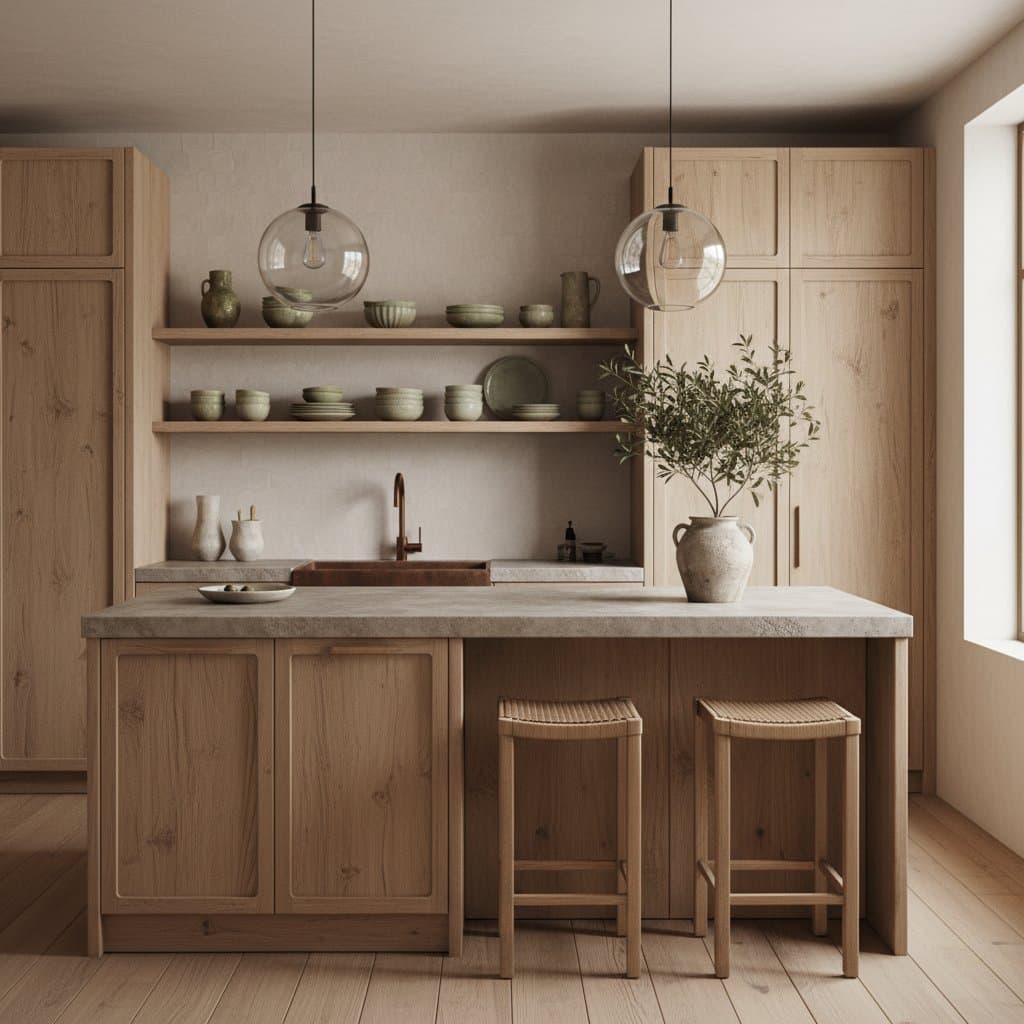Induction Cooktops: Leading the Shift to Gas-Free Kitchens by 2025
Kitchen design evolves quietly through innovations like induction cooking, which uses electromagnetic fields under a smooth glass surface to generate heat. This technology, once reserved for professional settings, now enters everyday homes, promoting energy efficiency and reduced emissions. Homeowners increasingly select induction to align with broader goals of sustainability and health, creating spaces that prioritize clean air and precise functionality.
Countertops serve as central elements in how families prepare meals and gather. The transition from gas to induction extends beyond equipment; it reflects a commitment to environmental stewardship and streamlined daily routines. This article examines five key characteristics of induction-equipped kitchens that define the gas-free standard, progressing from technical precision to broader lifestyle benefits.
1. Precision in Heating and Control
Induction cooktops heat pots and pans directly through magnetic induction, bypassing the need for an open flame or surface burner. This method achieves rapid temperature changes; for instance, water reaches a boil in less than two minutes and adjusts to a simmer instantly with minimal energy loss. Such responsiveness suits busy cooks who demand reliable performance without excess heat escaping into the room.
Designers including Patricia Urquiola and companies like Boffi incorporate this precision into cohesive kitchen layouts. They position the cooktop as an extension of the workspace, enhancing workflow efficiency. Users experience controlled cooking that supports intricate recipes, from searing meats to delicate sauces, while maintaining a cool, safe surface around the edges.
2. Seamless Architectural Integration
Contemporary induction surfaces blend into kitchen architecture as integral components rather than standalone appliances. Materials such as Caesarstone Cloudburst Concrete, Dekton Trilium, or Silestone Eternal Marquina form the base, allowing the cooktop to sit flush with surrounding counters. This approach minimizes visual disruption and maximizes usable space.
Firms like Norm Architects and Studio KO demonstrate this through subtle installations where the panel recedes when idle. Cabinetry, lighting, and finishes take precedence, with the technology enhancing rather than overpowering the design. Homeowners benefit from a unified aesthetic that supports open-plan layouts and simplifies cleaning routines.
3. Flexibility with Portable Options
Induction's modular nature introduces layout versatility, free from fixed gas connections. Units like Smeg's Plug and Cook or Franke's portable models relocate easily within the kitchen or to outdoor areas. This adaptability fosters interactive cooking setups, such as central islands where multiple people contribute to meal preparation.
Such options reshape spatial dynamics, accommodating varied lifestyles from solo dining to family events. Kitchens transform into fluid environments that encourage collaboration and spontaneity. Selectors of these systems gain the freedom to reconfigure spaces seasonally or as needs change, without major renovations.
4. Insights from Professional Kitchens
Originating in high-volume restaurant environments, induction excels in speed, accuracy, and hygiene. Professional chefs appreciate its quick recovery from temperature drops and simple wipe-down maintenance, which reduces downtime. Residential adoption mirrors these advantages, elevating home cooking to near-commercial standards.
Influential designers such as Clodagh Design and Kelly Wearstler merge this functionality with artistic elements, combining induction with bespoke ventilation and storage. Features like bridge zones expand to fit large skillets or griddles, offering versatility for diverse dishes. Home cooks thus enjoy elevated tools that blend reliability with refined style.
5. Fostering a Mindful Cooking Experience
Induction alters the sensory aspect of cooking, moving away from the dramatic flicker of gas flames toward subtle, intuitive operation. Without visible fire, focus shifts to tactile feedback and timing, promoting a serene atmosphere. Cleaner air and lower ambient heat contribute to a more comfortable cooking process overall.
This change aligns with trends in wellness-oriented homes, where technology supports rather than distracts. Designers note that the setup encourages deliberate actions, enhancing enjoyment in meal creation. As energy systems advance, induction reinforces the kitchen's role as a nurturing hub with sustainable practices at its core.
Practical Steps for Adopting an Induction Kitchen
Switching to induction involves evaluating both infrastructure and daily use to ensure smooth integration. Homeowners often find the process straightforward, with lasting rewards in efficiency and design harmony. Consider these steps to guide the transition.
- Evaluate electrical setup. Install a dedicated 240-volt circuit to support high-wattage demands and prevent performance issues.
- Choose compatible cookware. Opt for items with magnetic bases, such as enameled cast iron, stainless steel clad in iron, or carbon steel, to maximize heat transfer.
- Select harmonious surfaces. Pair the cooktop with durable options like polished quartz, large-format porcelain tiles, or low-gloss composites for a cohesive look.
- Plan effective ventilation. Integrate downdraft vents or slim overhead extractors that align with the kitchen's minimalist profile.
- Incorporate comforting elements. Add natural wood details, layered textiles, and ambient lighting to balance the modern tech with inviting warmth.
This adoption extends to cultural preferences, emphasizing sustainability and thoughtful living. Induction kitchens demonstrate that practical innovation enhances daily life without sacrificing appeal.
Benefits of Induction for Sustainable Home Life
Induction cooktops deliver tangible advantages in energy savings, with up to 90 percent efficiency compared to gas's 40 percent. Reduced indoor pollution supports respiratory health, particularly in urban settings. These systems also simplify maintenance, as the flat surface resists spills and requires no grate cleaning.
Homeowners report greater satisfaction from the precise control that prevents overcooking and waste. The design flexibility accommodates evolving family dynamics, from compact urban units to expansive rural setups. Ultimately, induction positions the kitchen as an efficient, empathetic space where culinary creativity thrives alongside environmental responsibility.









